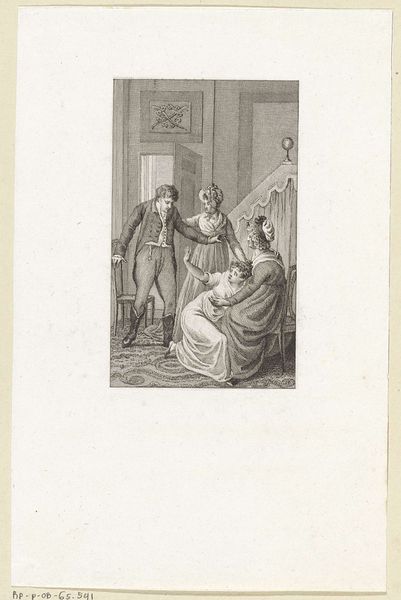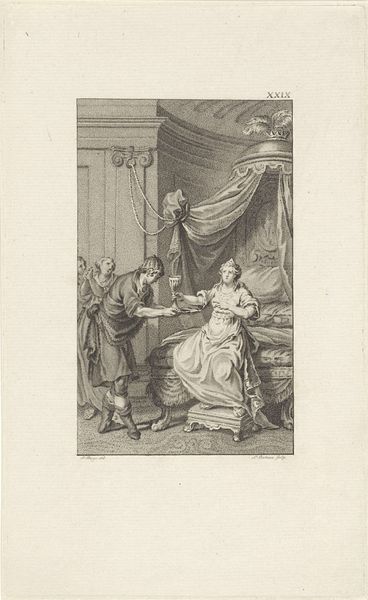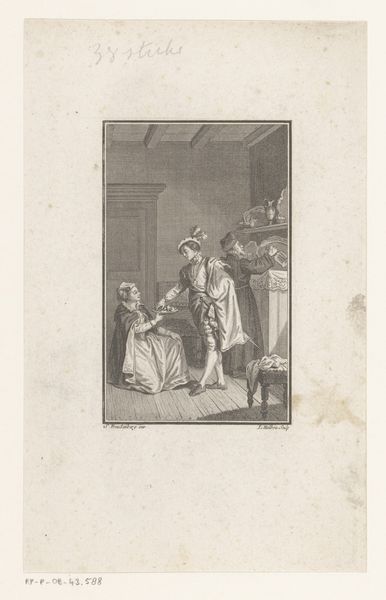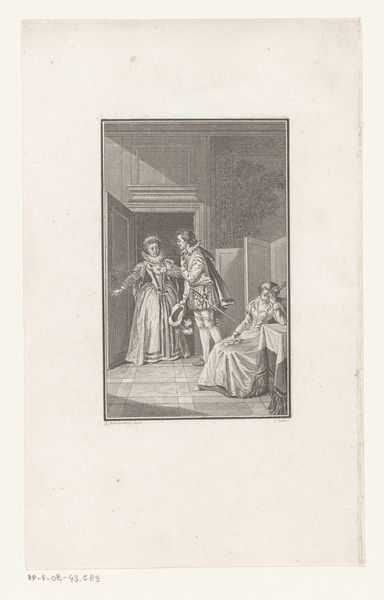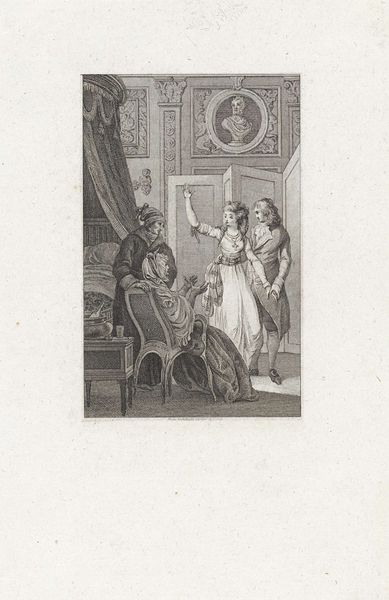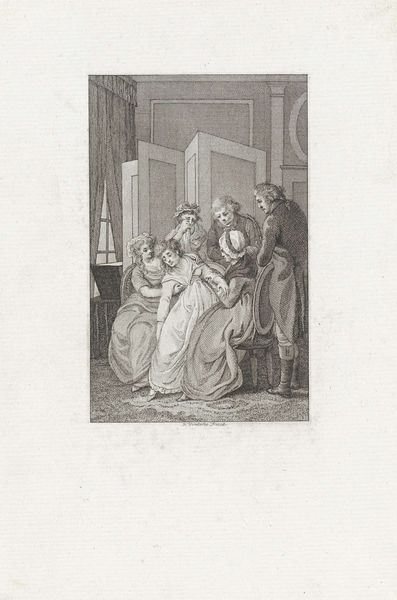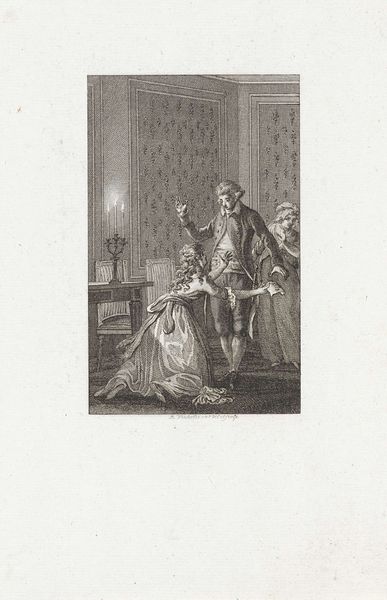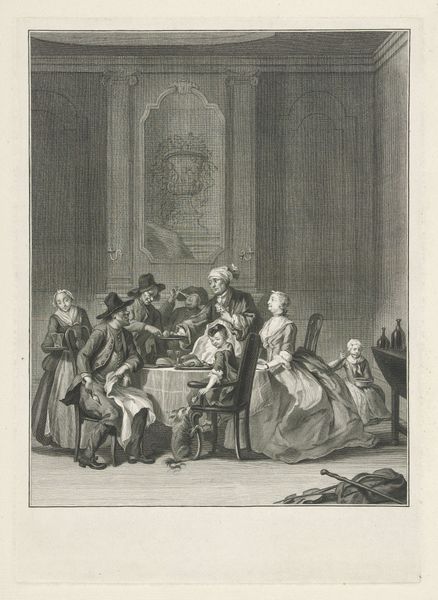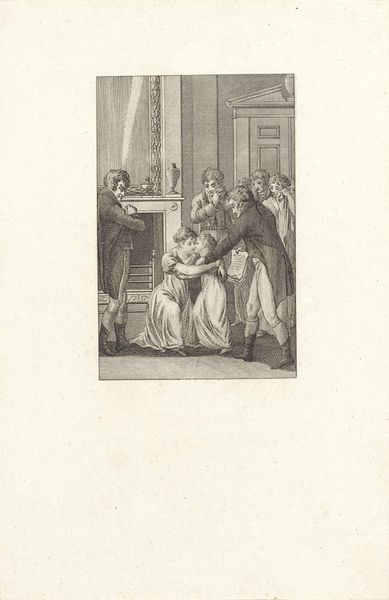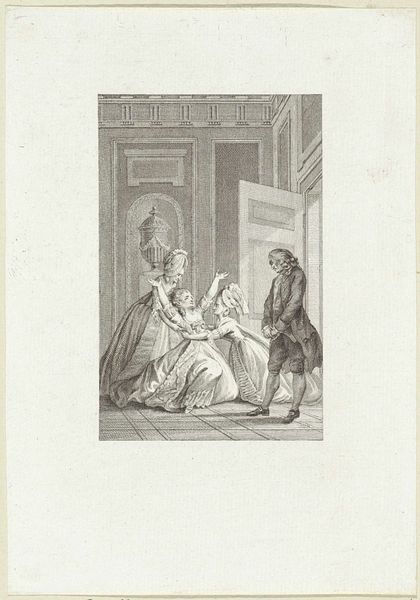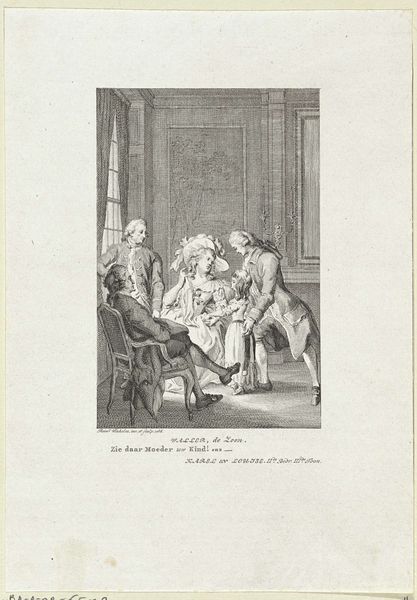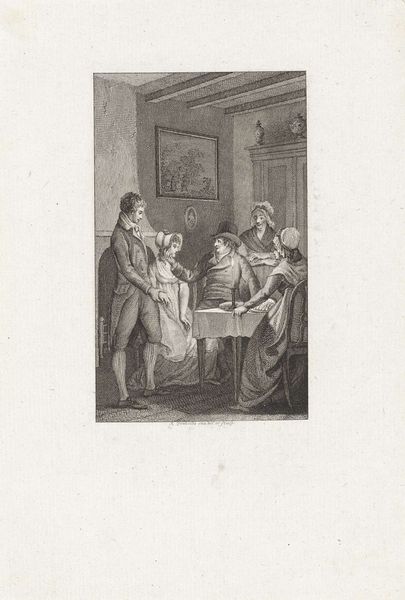
print, engraving
#
neoclacissism
# print
#
old engraving style
#
archive photography
#
genre-painting
#
history-painting
#
engraving
Dimensions: height 200 mm, width 121 mm
Copyright: Rijks Museum: Open Domain
Editor: This is "Vijf figuren in een interieur," or "Five Figures in an Interior," an engraving by Jacob Ernst Marcus, likely made between 1784 and 1826. The details created using the engraving medium, like the shading and textures, are quite remarkable. I'm struck by how contained everything feels, even with the seemingly emotional scene unfolding. What’s your perspective on this piece? Curator: It's fascinating to consider this print through the lens of its production. Engravings like these were, first and foremost, a *process* meant for dissemination. How many impressions could be pulled from the plate before it degraded? How did the labor involved reflect class distinctions? Was Marcus' work intended for an emerging middle class who desired affordable art that celebrated the every day or more of the wealthy at the time? Look at the dress, the architecture, it shows how the materials used and depicted were tied to socioeconomic standing and the machinery used for creation. The print served to democratize image ownership in some sense, though, paradoxically, also reifying social status. Do you see this tension in other printed materials from this period? Editor: I think so. There's a way in which making something widely available can also solidify its cultural importance. Almost like making an image "official" by reproducing it so much. Curator: Precisely. The availability shapes its reception and impact. Were these five figures, in this aesthetic, readily accepted due to the consumption or did this type of artistic labor democratize other rising styles. This changes how we interpret the depicted scene and also see who this image was for. What do you take away from the material properties of the print itself? Editor: It shows how interconnected economic changes, consumption, and cultural shifts can all be! I originally just saw a scene from a bygone era, but now, looking at it as a material object changes its potential significance.
Comments
No comments
Be the first to comment and join the conversation on the ultimate creative platform.

